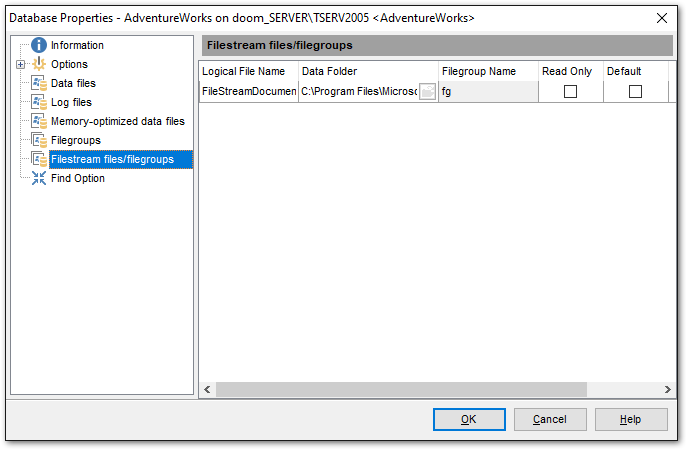Online Documentation for SQL Manager for SQL server
Filestream files and filegroups
The Filestream files and filegroups section of the Database Properties dialog allows you to manage filestream filegroups for the database.
Note: This section is only available for SQL Server 2008 and higher.
In SQL Server 2008, FILESTREAM enables the application to store unstructured data (such as text documents, images, videos, etc.) on the file system. FILESTREAM integrates the SQL Server Database Engine with an NTFS file system by storing varbinary(max) binary large object (BLOB) data as files on the file system. Transact-SQL statements can insert, update, query, search, and back up FILESTREAM data. Win32 file system interfaces provide streaming access to the data.
To add a filestream file, right-click in the main working area and select the Add Filestream File popup menu item.
To remove a filestream file, right-click the file in the list and select the Delete Filestream File popup menu item.

The Logical File Name is the name of the logical file storing the data used to refer to the physical file in all Transact-SQL statements.
Data folder
The physical location of the data. The directory must be located on the server where the database resides. Use the ![]() button to
button to
open the SQL Server Folders dialog to select the preferable directory.
Filegroup Name
Specify the name of the filestream filegroup.
![]() Read Only
Read Only
Specifies that the filestream filegroup is read-only. Updates to objects that reside in this filestream filegroup are not allowed. The default fiestream filegroup cannot be read-only.
![]() Default
Default
The filestream fields data will be stored in this filestream filegroup if none was specified for the table.
|
See also: |



































































